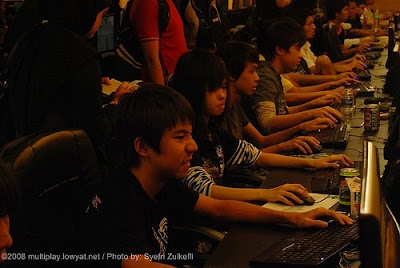Corporate Blogging: A New Marketing Communication Tool for Companies
 vision, newly launched products online, especially to external parties. It can be used internally whereby it communicates the people within the organization.
vision, newly launched products online, especially to external parties. It can be used internally whereby it communicates the people within the organization.Is corporate blog must be very "marketing literature"? I would say: "Won't it be too formalized? I would like to have some humour elements, please~" If humour can be well managed (either company-sponsored or user-created humour, with the right proportion), it can make corporate blog effective and great! Humour is a way to get your blog readers' attention, create close relationship with your customers, suppliers employees and so on. What if a corporate blog looks as if the company is the author of the blog that "voice out" itself? Sounds great isn't it?
I personally find Redfin's corporate blog is interesting whereby it either introduces the life within organization or promotes its core business in the way of humour. Nevertheless, it allows its customers to participate in the humour posts as well! I would like to share here. (Redfin is an online real estate brokerage)
http://blog.redfin.com/blog/category/humor

- Creating blog is a social media strategy whereby it plays a role of communication agent.
- It is a useful extension of the company's image in the marketplace.
- Updated information is vital as it encourages users to stick to the company when people find that they can obtain some organic search or keywords on the latest information from the blog. This could be done in a dialogue form. For instance, conversation between employees and customers can be included in the corporate blog to create a different way of customer service on enquiries. Whenever a customer types keywords to search for information, the answer for the enquiries will be shown in the dialogue way.
- Good for customers as they won't feel so boring as the traditional one does.
Reputation influence the marketability of a company's services and products. With the creative and useful blog the company established, new customers will be attracted and close relationship with customers can be produced; confidence in customers towards the company will be gradually enhance, thus reputation being pushed!
 In the organization, its blog is normally set up through their intranet. Everyone in the organization can access regardless which level you are in. Employees have the opportunities to interact and share information among themselves, better relationship between managers and subordinates can be developed. It provides a more comfortable working environment that not putting employees under pressure, thus they will be more commit to the organization.
In the organization, its blog is normally set up through their intranet. Everyone in the organization can access regardless which level you are in. Employees have the opportunities to interact and share information among themselves, better relationship between managers and subordinates can be developed. It provides a more comfortable working environment that not putting employees under pressure, thus they will be more commit to the organization.It is highly encourage companies to start establish their own blogs as it no only bring benefits to the company itself but also their stakeholders. It is like the idiom : one stone kill "few" birds :P
However, corporate blog should be revisiting frequently by the organization to prevent destructive comments and loss of control of over message.

























